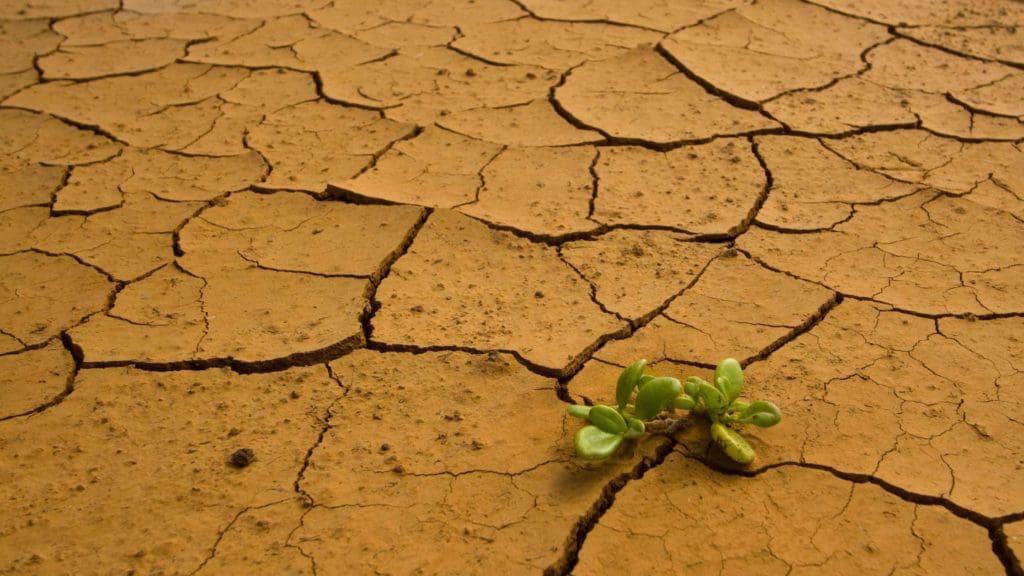How to Safeguard Your Home’s Foundation During a Texas Drought
Warning Signs to Look For During a Drought
In addition to the weather reports, which indicate the locations where drought conditions will occur, there are a few signs that clearly show whether your soil is affected by drought or not. These include:
- Leaves curling, yellowing, or dropping – Although the yellowing and curling of leaves, as well as premature leaf drop, may be signs of a disease or insect infestation, these problems could also suggest that your plants are under drought stress.
- Dry soil – The easiest way to determine if your soil has been affected by drought is to push a foot-long slender screwdriver into the ground in different locations. If the screwdriver penetrates the soil easily, the moisture content of your soil is sufficient. If it doesn’t penetrate the soil, it means that your soil has lost most of its moisture.
Water shortages, dry soil, and dying plants are just some of the problems that drought can cause. When dry conditions persist,clay soils, which are common in many areas across Houston Texas, tend to shrink significantly. This basically means that the soil under your home could develop large cracks and recede from your foundation. Because all this soil movement causes a lot of stress under your home, your foundation and slab may start to develop cracks.
Once rain returns, the clay soil will start to absorb a lot of water and expand. Considering that the soil under your foundation won’t be exposed to the same amount of water at the same time—meaning that certain parts of the soil beneath your foundation could absorb more water than others—it may create an unequal upward pressure on your foundation. When that happens, your foundation can sink more in some areas and shift, eventually causing your home to sit unevenly on it. Additionally, any preexistent cracks in the foundation will grow deeper and larger.
Because the cracks that develop in the soil under and around your home along with a shifting foundation typically have a domino effect on different home components and structures, here are some signs that indicate you might have drought-related problems in your home:
- Cracks in walls, chimney, stairs, and other structures made from bricks, concrete, drywall, stucco, or other rigid materials;
- Windows and doors that become misaligned and start to stick, so they no longer open and shut properly;
- Gaps between cabinets/countertops and walls;
- Floors and slabs that sink or slope;
- Broken pipes and leaks in the crawlspace and inside your walls;
- Chimney, columns, and/or other tall structures that are tilting and separating from your home;
- Cracks and gaps in areas where your foundation meets exterior structures, such as exterior walls and stairs;
- Cracked pavement on walkways and driveways.
One important thing to know is those foundation problems, specifically shifting and moving, tend to get worse over time. If you observe any of the aforementioned issues in your home, it’s important to contact a professional who can assess the damage and recommend the most appropriate foundation repair methods for your property.
Prevent Foundation Damage due to Drought
The good news is that serious foundation problems caused by drought could be relatively easy to avoid by keeping the soil around and under your foundation evenly moist. This could be achieved through:
- Watering your foundation regularly – The easiest way to water your foundation is to run a soaker hose around the exterior perimeter of your home. While this method allows you to keep the soil moist enough in order to prevent foundation damage during a drought, too much water under and around your foundation could cause the soil to become too soft. As a result, it may no longer be able to support the load of your home. To avoid overwatering your foundation, the specialists recommend placing the hose 18 to 24 inches away from your home.
- Planting drought-tolerant shrubs and groundcovers around your home –Drought-tolerant groundcovers and shrubs don’t need too much water to grow and thrive. Besides boosting your home’s curb appeal, these plants provide plenty of shade, reducing heat buildup and water evaporation from the ground. To help your plants retain moisture better during a drought, you can also add a layer of mulch. If you’re planning to plant any shrubs or trees with deep and large root systems closer to your home, you should install root barriers, like theBioBarrier system. This system prevents foundation damage by simply redirecting roots away from your home.
Protecting your foundation and home can be difficult during a Texas drought. However, you can mitigate the negative effects of repeated contraction and expansion of the soil by simply implementing the measures described above. Additionally, remember to inspect your foundation on a regular basis andcontact our foundation repair specialists as soon as you notice the first signs of foundation problems.

